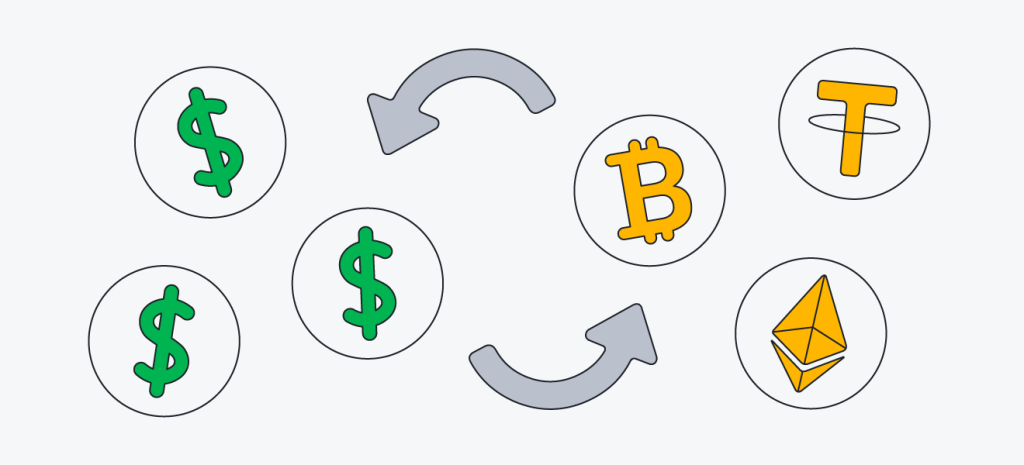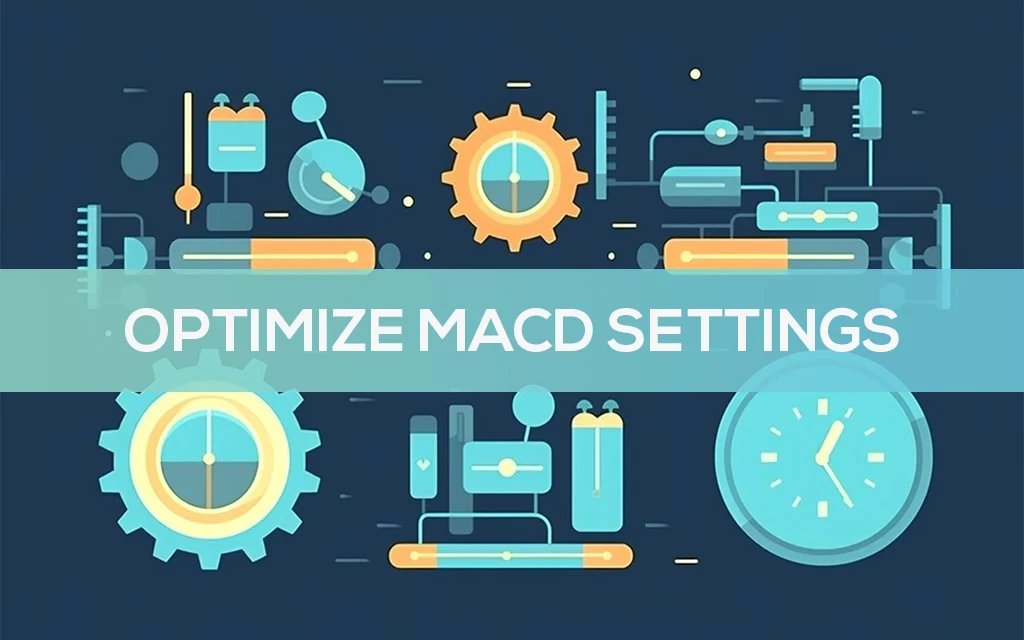In the ever-twisting maze of the crypto world, technical analysis of crypto market skills shine like a torch. It’s not just about hunches; it’s about spotting the patterns that hint at the next big move. I dive deep into charts, slicing through the noise like a hot knife through butter. I size up candlestick formations, tease out the strong signals, and map out those zones where price action says “stop” or “go”. Stick around, and I’ll unpack the powerful tools that could turbo-charge your trading game. Get ready to transform those cryptic crypto squiggles into real, bankable strategies.
Decoding Market Movements with Chart Analysis
Interpreting Candlestick Patterns for Trading Signals
Charts help us see patterns in crypto prices. We look for special shapes called candlestick patterns. These patterns tell us if prices might go up or down. For example, a shape that looks like a hammer can mean prices could rise. If we spot a pattern called a shooting star, prices might fall. By studying these shapes, we can guess where the price will go next.
Candlestick patterns are like a secret code. When we crack this code, we can make smart moves in crypto trading. With these patterns, we get hints about the best time to buy or sell. It’s important to watch for them often to make strong trading choices.
Identifying Key Support and Resistance Zones
Imagine you’re pushing up on a heavy ceiling — that’s resistance. Now think of bouncing on a strong floor — that’s support. In crypto, these are levels where prices often stop falling or climbing. By finding these zones, we can better guess where prices will turn around.
Support is where prices might not fall below. Resistance is where they might not rise above. If prices break these zones, big changes can happen. We use history to find these zones. This history helps us see where prices stopped before. By knowing these zones, we can plan our trades around them.

Crypto moves fast, and so must we. We use tools like charting software to find these key zones. With them, we’re equipped to handle the ups and downs of crypto markets. Remember, prices can surprise us, so we stay on our toes and never risk more than we can afford to lose.
Remembering these tips can help us ride the crypto market waves better. Use candlestick patterns and key zones to make informed decisions. This way, we can play the crypto game with clearer rules in mind.
Navigating Trends with Technical Indicators
Utilizing Moving Averages to Gauge Market Direction
When I look at a cryptocurrency chart, the first thing I spot is the moving average. This line smooths out price data by averaging it over a period. It shows if a crypto’s price is going up or down over time.
Think of it like a river’s flow. If a river flows smoothly in one direction, it’s easy to swim with it. That’s your moving average. When it points up, the market looks strong. It’s like a green light to buy. When it’s down, it might be time to sell.
You can use short-term or long-term moving averages. Short ones react fast to price changes. Long ones are slow and show big trends. They work like magic when they cross. This is a signal. It can tell us if it’s time to get in or out of the market.
Applying RSI and MACD for Momentum Insights
Now, let’s talk about momentum. This is where RSI and MACD come into play. They are like a car’s speedometer, showing how fast prices are moving.
RSI, or Relative Strength Index, measures recent price changes. It goes from 0 to 100. A high number, above 70, suggests a coin might be overbought. Under 30? It could be oversold. Think of it as a tug of war. When one team gets too far ahead, the other might soon pull back hard.

Now, to the MACD. This stands for Moving Average Convergence Divergence. Quite a mouthful, right? It’s two lines tracking moving averages at different speeds. When these lines cross, it’s a big deal. It can mean a new trend is starting. It’s like a friend telling you, “Hey, look, something’s changing!”
By using moving averages, RSI, and MACD, we get clues. We get a sense of where the crypto market might be headed. But remember, they’re tools, not crystal balls. They help craft a plan, but they’re part of a bigger toolbox. That’s where knowing your crypto and keeping an eye on the news also comes in.
So, there you have it. Moving averages to spot the trend direction. RSI to gauge momentum. MACD to get a whisper of upcoming changes. With these tools, we can ride cryptocurrency waves like surfing champs, ready to catch the big ones and steer clear of wipeouts. It’s not just about luck—it’s about skill, timing, and a little bit of tech savvy!
Enhancing Trade Accuracy with Advanced Techniques
Leveraging Fibonacci and Pivot Points for Precision
Fibonacci is huge in trading. It sounds complex, but it’s a simple idea. Traders use lines, called Fibonacci retracement, to find where prices might turn around. These lines are at special spots – 23.6%, 38.2%, 50%, 61.8%, and 100% of a price move. When prices hit these lines, they might bounce back or break through.
Pivot points are like markers. They show where the price could slow down or change direction. They’re average highs, lows, and close prices from before. Every day, the market shows a new pivot point. So, traders watch these to make smart moves.
Both tools help you guess where prices might go. They point out good spots to enter or exit a trade. But remember, they are not always right. It’s like weather forecasting. We can predict rain, but still get sunshine.
Harnessing the Ichimoku Cloud and Elliott Wave Theory
The Ichimoku Cloud sounds like a ninja move, and it kind of is in trading. It gives you a fast look at the market. It has five lines and shows support and resistance, trend direction, and momentum. When the price is above the cloud, that’s good for buyers. Below the cloud, it’s good for sellers. The cloud changes color to show if the market might go up or down.
Now, let’s talk waves, not the ocean kind, the Elliott Wave Theory kind. It says prices move in repeating patterns called waves. Think of a surfer catching waves. In markets, these patterns show the mood of traders. Five waves go up in a trend, and three waves go down for a correction. It helps to guess where prices might go next.
When we use these tools, we can spot trends and even find when they might end. This helps us decide when to buy or sell. Tools like the Ichimoku Cloud and Elliott Wave can make your trading sharper, but you need practice.
Remember, these are tools, not magic wands. Always check them with other signs in the market. Look at price moves, crypto volume, and candlestick patterns too. No one wins every trade, but with practice, we can win more than we lose. Always use data and don’t trade on gut feelings.
In trading, like in life, we use what works best for us. Some like Fibonacci and pivot points for their clear levels. Others swear by the Ichimoku Cloud’s quick visuals. Many dig into the Elliott Wave for deeper market vibes. We mix and match to make our own best moves.
Trading crypto can be like sailing a boat; the wind changes fast. Use these tools to read the wind right and sail smoothly, even when the water gets rough. Keep learning, testing, and trading. That’s how we get better and smarter with every trade.
Strategic Trading in the Crypto Landscape
Recognizing High-Probability Setups through Price Action
When I dive into charts, the first thing I look at is the price action. This is the raw data of all past trades. It tells us where the price has been and can hint at where it’s going. Now, let’s break that down. We’ve got these things called candlesticks. You’ve seen them—they look like boxing gloves! Candlestick patterns tell us the mood of the market. Is it scared? Is it bold? Knowing this, we can spot patterns that show up over and over again.

Let’s take “bull” and “bear” flags. They sound like animals, right? But here’s the deal: bear flags drop and then consolidate, while bull flags rise then consolidate. See them, and you’ve got a clue about what might come next.
For a winning game, we explore support and resistance levels. Think of them as floors and ceilings in the market—prices where cryptocurrencies bounce back from or break through. Mark those levels, and you’re one step ahead.
But remember, it’s not just about one signal. More clues mean you’re onto something good. A solo signal can fool you, but get a bunch together, and you’re onto something. That’s what great crypto technical analysis is all about—putting together pieces of a puzzle.
Optimizing Trade Execution using Stochastic Oscillators
Now on to something spicier—stochastic oscillators. They sound crazy, but here’s the lowdown: they help us see momentum by comparing a crypto’s closing price to its price range over time. This gives us a line — if it’s high, the crypto might be overbought. If it’s low, it might be oversold. Simple, huh?
Trading’s about timing, and that’s where stochastics shine. They signal when to jump in or out. They have two lines — %K and %D — when they cross, pay attention. It’s like a secret handshake telling you it’s go time.
Using stochastics, we’re not just guessing — we’re making smart moves based on what the market’s rhythm is telling us. Combine this with price action, and you’re like a crypto ninja.

So here’s the game plan: we watch those candles, we draw those lines, and we check our stochastics. Spot a setup where everything lines up? That’s your ticket to play. And the best part is, with every trade, you’re learning — becoming more in tune with the market’s beat.
Trading crypto is no cakewalk, that’s for sure. It’s a craft, a skill that you can sharpen with the tools I’ve shared. Price action and stochastics are your bread and butter in the kitchen of cryptocurrency trading. Learn them well, and you could be serving up profitable trades all day long. Trust in the tools, trust in the signs, and let them guide you through the wild world of crypto trading. And remember, keep it simple — that way, you stay on top of the game, and you let the market come to you.
In this post, we dove into the heart of market analysis and grabbed some solid strategies to read trends and signals. We started by breaking down candlestick patterns and revisited the crucial roles of support and resistance zones. These basics set the stage for successful trading.
Then, we leveled up with tech tools: moving averages, RSI, and MACD. These are your compass in the wild market seas, pointing you to where the action’s heating up. But why stop there? We looked at the big guns—Fibonacci, pivot points, Ichimoku Cloud, and Elliott Wave Theory, sharpening your trade game to a razor’s edge.
Finally, we tailored these techniques for the crypto world, unearthing high-probability setups and fine-tuning our trade timing with stochastic oscillators. These insights can be game-changers.
With these tools, you’re now well-armed to tackle the markets with confidence. Remember, it’s not just about catching the big waves; it’s about riding them with precision. Happy trading!
Q&A :
What is technical analysis in the context of the cryptocurrency market?
Technical analysis in the cryptocurrency market involves studying historical price data and trading volumes to predict future price movements. By identifying patterns, trends, and support and resistance levels, traders can make informed decisions on when to buy, sell, or hold crypto assets. This method relies on the belief that all current market information is reflected in the price and that history tends to repeat itself.
How does technical analysis differ from fundamental analysis in crypto trading?
While technical analysis focuses on charts, patterns, and indicators to predict price movements, fundamental analysis in crypto trading looks at the intrinsic value of a cryptocurrency. This includes its technology, team, market position, and any other qualitative and quantitative factors that could affect its future price. While technical analysts concentrate on ‘what’ and ‘when’ to trade, fundamental analysts focus on ‘why’ an asset should be traded.
Can technical analysis be used for all types of cryptocurrencies?
Yes, technical analysis can be applied to all types of cryptocurrencies, from the most popular ones like Bitcoin and Ethereum to smaller altcoins. However, the effectiveness may vary with market liquidity and the availability of historical data. Highly liquid markets with a lot of trading data can provide more reliable insights when using technical analysis tools and techniques.
What are the common technical indicators used in crypto technical analysis?
Common technical indicators used in crypto technical analysis include moving averages (MA), Relative Strength Index (RSI), Moving Average Convergence Divergence (MACD), Bollinger Bands, and Volume indicators. Each of these helps in identifying different market aspects such as momentum, trend direction, volatility, and trading volume, which are crucial for making trading decisions in the crypto market.
How can traders manage risks when using technical analysis for crypto trading?
Traders can manage risks by setting stop-loss orders, using proper position sizing, and not investing more than they can afford to lose. Diversification across different crypto assets and regular reevaluation of technical analysis strategies in response to market changes can also help mitigate potential losses. Moreover, it’s essential for traders to stay updated with market news that could affect price movements that are not always predictable by technical analysis alone.


